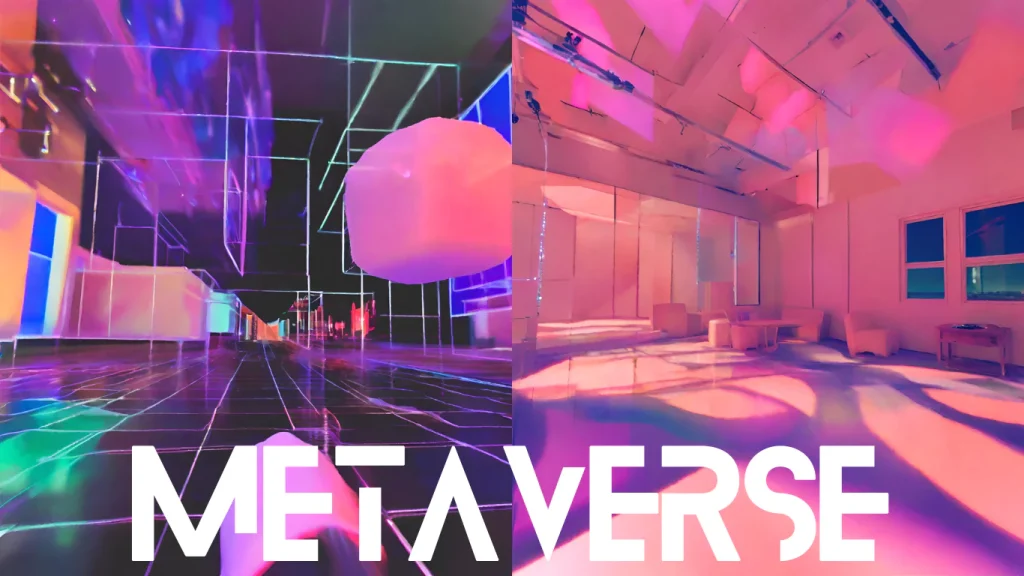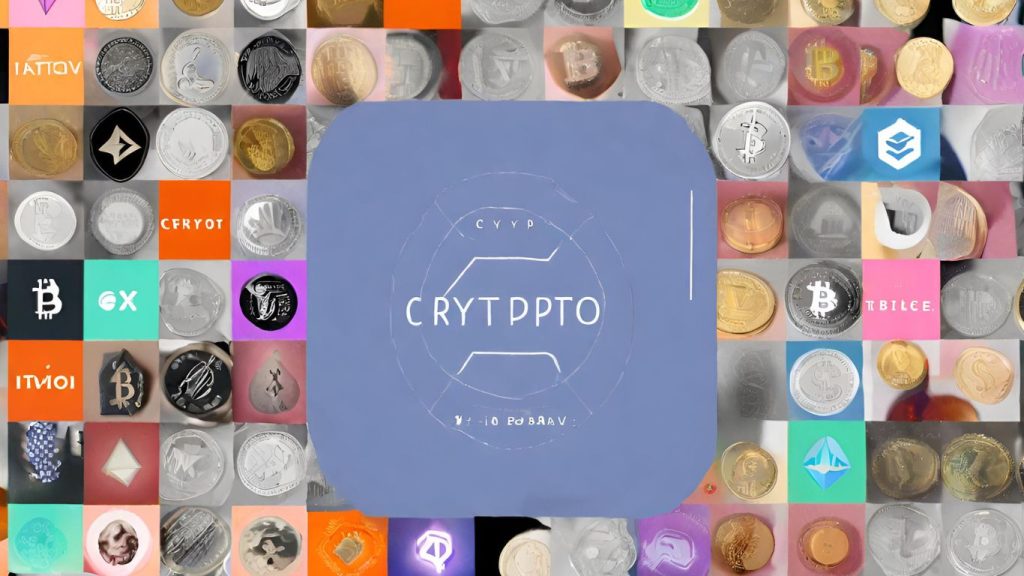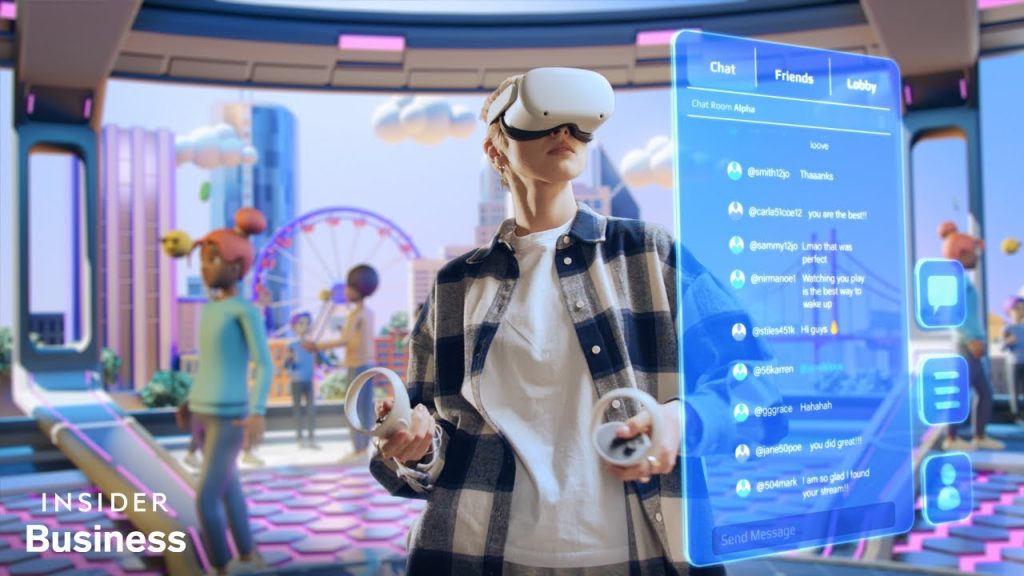Navigating the Metaverse A Beginner’s Guide to Virtual Worlds
Table of Contents
Metaverse Companies
The race to build the metaverse is on, with tech giants like Meta (formerly Facebook), Microsoft, Nvidia, and Epic Games leading the charge. These companies are investing billions into developing the virtual worlds, hardware, and software that will power the metaverse.
| Company | Focus Areas |
|---|---|
| Meta (Facebook) | Social VR, AR, metaverse development |
| Microsoft | Mixed reality, enterprise metaverse solutions |
| Nvidia | Omniverse platform, simulation, collaboration |
| Epic Games | Game engines, virtual worlds, digital economies |
| Unity | Game engines, real-time 3D development |
| Roblox | User-generated virtual worlds, gaming experiences |
| Decentraland | Decentralized virtual world, virtual real estate |
| The Sandbox | User-generated content, NFTs, gaming metaverse |
Why is the Metaverse Important?
The metaverse is expected to be the next evolution of the internet, where virtual and physical worlds merge. It promises a more immersive, interactive, and collaborative online experience, blurring the lines between digital and real-life. As such, the metaverse has the potential to revolutionize the way we work, learn, socialize, and entertain ourselves.
How do NFTs Fit into the Metaverse?
Non-fungible tokens (NFTs) play a crucial role in the metaverse by enabling true ownership of digital assets. In virtual worlds, NFTs can represent unique items such as clothing, art, real estate, and more. This creates new opportunities for creators, collectors, and businesses to monetize their digital assets.
How Will the Metaverse Affect the Future?
The metaverse is likely to have a profound impact on various industries, including:
- Entertainment: Immersive virtual concerts, movies, and gaming experiences.
- Education: Interactive and engaging learning environments.
- Healthcare: Telemedicine, virtual therapy, and simulated training for medical professionals.
- Real Estate: Virtual property ownership and development.
- Retail: Virtual shopping experiences and digital product showrooms.
Metaverse Pros and Cons, Challenges
Like any emerging technology, the metaverse comes with its own set of advantages and challenges:
Pros:
- Increased accessibility and inclusivity
- New business opportunities and revenue streams
- Enhanced collaboration and communication
Cons:
- Privacy and security concerns
- Potential for addiction and escapism
- Technical challenges (hardware, bandwidth, interoperability)
The Metaverse is Described as the Inevitable Evolution of the Internet. But What Exactly is the Metaverse, and What Will it Become? Learn What Businesses Need to Know Now
The metaverse is a concept of a persistent, shared, and immersive virtual world facilitated by the convergence of virtual reality (VR), augmented reality (AR), and the internet. It’s a digital realm where people can interact, work, play, and create within a simulated environment.
While the idea of the metaverse has been around for decades, recent advancements in technology have brought it closer to reality. Companies like Meta (Facebook), Microsoft, and others are investing heavily in building the infrastructure and tools needed to bring the metaverse to life.
Other Metaverse Technologies
Beyond VR and AR, the metaverse will also incorporate other cutting-edge technologies, such as:
- Blockchain and Cryptocurrencies: Enabling secure and decentralized transactions within virtual economies.
- 5G and Edge Computing: Providing the necessary bandwidth and low-latency for seamless metaverse experiences.
- Artificial Intelligence (AI) and Machine Learning (ML): Powering intelligent virtual assistants, content creation, and personalization.
- Internet of Things (IoT): Enabling interconnectivity between physical and virtual objects.
What is the Metaverse Used for Today?
While the fully-realized metaverse is still in its infancy, elements of it are already in use today:
- Virtual Meetings and Events: Platforms like Spatial, Horizon Workrooms, and AltSpaceVR enable virtual gatherings and collaboration.
- Gaming: Games like Roblox, Fortnite, and Minecraft offer shared virtual worlds where players can interact and create.
- Virtual Real Estate: Platforms like Decentraland and The Sandbox allow users to purchase and develop virtual land and properties.
Description
This comprehensive guide aims to help beginners navigate the exciting and rapidly evolving world of the metaverse. We’ll explore the key concepts, technologies, and companies driving this revolution, as well as the potential implications for businesses and society as a whole.
Is the Metaverse Coming?
The metaverse is not a singular product or service but rather a convergence of various technologies and platforms. While some elements of the metaverse already exist, the full realization of a truly immersive, persistent, and interoperable virtual world is still in development.
Major tech companies like Meta, Microsoft, and others are investing heavily in building the infrastructure and tools needed to bring the metaverse to life. However, significant technological and regulatory challenges still need to be addressed before the metaverse can become a mainstream reality.
How Does the Metaverse Work?

The metaverse is envisioned as a shared, persistent virtual world where people can interact, work, play, and create using advanced technologies like virtual reality (VR), augmented reality (AR), and the internet.
To access the metaverse, users will likely need specialized hardware, such as VR headsets or AR glasses, as well as high-speed internet connectivity. Within the metaverse, users will be represented by digital avatars, which can move between different virtual environments and interact with other users and digital objects.
The metaverse will be powered by a combination of technologies, including:
- Virtual and Augmented Reality: Providing immersive and realistic virtual experiences.
- Blockchain and Cryptocurrencies: Enabling secure and decentralized transactions within virtual economies.
- Artificial Intelligence (AI) and Machine Learning (ML): Powering intelligent virtual assistants, content creation, and personalization.
- Internet of Things (IoT): Enabling interconnectivity between physical and virtual objects.
How Virtual Reality and the Metaverse Relate to Each Other
Virtual reality (VR) is a key enabling technology for the metaverse, providing users with an immersive and interactive virtual experience. In the metaverse, VR will be used to create realistic and persistent virtual worlds, where users can interact with each other and digital objects using VR headsets or AR glasses.
However, the metaverse is not limited to VR alone. It also incorporates other technologies like augmented reality (AR), blockchain, artificial intelligence (AI), and the internet of things (IoT). The metaverse aims to create a seamless and interconnected digital realm that blends the physical and virtual worlds.
How is the Metaverse Accessed?
To access the metaverse, users will likely need specialized hardware, such as virtual reality (VR) headsets or augmented reality (AR) glasses, as well as high-speed internet connectivity.
Some of the hardware and platforms that could be used to access the metaverse include:
- VR Headsets: Devices like Meta’s Quest, HTC Vive, and Sony’s PlayStation VR provide immersive virtual experiences.
- AR Glasses: Companies like Microsoft, Apple, and Google are developing AR glasses that can overlay digital information onto the real world.
- Gaming Consoles and PCs: High-end gaming systems and computers may be able to run metaverse applications and experiences.
- Smartphones and Tablets: Mobile devices could provide access to certain metaverse experiences through AR apps and interfaces.
In addition to hardware, users will likely need to create digital avatars and identities within the metaverse platforms and virtual worlds they wish to explore.
The Metaverse is Described as the Inevitable Evolution of the Internet. Tell Me the Metaverse? TechTarget’s In-Depth Guide to the Metaverse Explains Where This Nascent Technology Revolution Stands Today and Where It Is Headed
The metaverse is a concept of a persistent, shared, and immersive virtual world facilitated by the convergence of virtual reality (VR), augmented reality (AR), and the internet. It’s a digital realm where people can interact, work, play, and create within a simulated environment.
While the idea of the metaverse has been around for decades, recent advancements in technology have brought it closer to reality. Companies like Meta (Facebook), Microsoft, and others are investing heavily in building the infrastructure and tools needed to bring the metaverse to life.
The metaverse is envisioned as a unified and interoperable virtual space that transcends individual platforms or applications. It aims to create a seamless and interconnected digital realm that blends the physical and virtual worlds, enabling new forms of social interaction, entertainment, commerce, and more.
However, the metaverse is still in its early stages, and significant technological, regulatory, and societal challenges need to be addressed before it can become a mainstream reality.
Permissions
The metaverse raises important questions about data privacy, ownership, and governance. As virtual worlds become more integrated with the physical world, issues around data collection, surveillance, and user consent will become increasingly relevant.
Governments and regulatory bodies will likely need to establish clear guidelines and policies to protect user privacy and ensure fair and ethical practices within the metaverse.
Additionally, the decentralized nature of the metaverse may necessitate new models of digital ownership and governance, potentially leveraging technologies like blockchain and decentralized autonomous organizations (DAOs).
Navigating the Metaverse A Beginner’s Guide to Virtual Worlds

Navigating the Metaverse: A Guide to Limitless Possibilities in a Web 3.0 World
How Should Businesses Prepare for the Metaverse?
As the metaverse continues to take shape, businesses should start preparing for the opportunities and challenges it presents:
- Develop a metaverse strategy: Evaluate how the metaverse could impact your industry and identify potential use cases.
- Experiment with metaverse technologies: Explore and pilot metaverse platforms, virtual events, and immersive experiences.
- Upskill and hire metaverse talent: Invest in training or hiring employees with skills in areas like VR/AR development, 3D modeling, and virtual world design.
- Ensure data privacy and security: Establish policies and protocols to protect user data and ensure ethical practices within the metaverse.
- Explore new revenue streams: Identify opportunities for virtual goods, services, and experiences within the metaverse economy.
VR Contributes to the Industrial Metaverse
Virtual reality (VR) is playing a crucial role in the development of the industrial metaverse, enabling new applications in areas like design, manufacturing, and training.
- Virtual Prototyping and Design: VR allows engineers and designers to visualize and interact with digital models, facilitating collaboration and iteration.
- Virtual Factory Simulations: Companies can simulate and optimize factory layouts, workflows, and processes in a virtual environment before implementing physical changes.
- Remote Collaboration and Assistance: VR enables remote experts to provide guidance and support to on-site technicians or workers, improving efficiency and safety.
VR Bolsters Corporate Training
Virtual reality is transforming corporate training by providing immersive and engaging learning experiences:
- Soft Skills Training: VR can simulate real-world scenarios for training in areas like customer service, sales, and leadership.
- Safety and Compliance Training: Employees can practice safety protocols and procedures in a risk-free virtual environment.
- Technical and Procedural Training: VR allows hands-on training for complex tasks or equipment operation without the need for physical resources.
Difference Between the Internet and the Metaverse
The internet and the metaverse are related but distinct concepts:
- The Internet: A global network of interconnected computer networks that enables the exchange of data and information.
- The Metaverse: A persistent, shared, and immersive virtual world facilitated by the convergence of virtual reality (VR), augmented reality (AR), and the internet.
While the internet serves as the underlying infrastructure for the metaverse, the metaverse aims to create a more immersive and interactive digital realm where users can interact, work, play, and create within a simulated environment.
The metaverse is envisioned as a unified and interoperable virtual space that transcends individual platforms or applications, blurring the lines between the physical and digital worlds.
VR Sets Stage for Healthcare Metaverse
Virtual reality is paving the way for the healthcare metaverse, enabling new applications in areas like:
- Medical Training: VR simulations can provide realistic and immersive training environments for medical students and professionals.
- Therapeutic Applications: VR can be used for exposure therapy, pain management, and rehabilitation exercises.
- Virtual Consultations and Telemedicine: VR allows for remote consultations and virtual visits, improving access to healthcare services.
- Surgical Planning and Visualization: VR can help surgeons plan and visualize complex procedures before entering the operating room.
What is the Metaverse? A Short History
The concept of the metaverse has its roots in science fiction, but its origins can be traced back to the early days of virtual reality and online gaming:
- 1992: The term “metaverse” was coined by Neal Stephenson in his science fiction novel “Snow Crash,” describing a virtual reality-based successor to the internet.
- 1990s: The rise of virtual worlds like Second Life and massively multiplayer online games (MMOs) like World of Warcraft laid the foundation for shared virtual spaces.
- 2010s: The emergence of consumer-grade virtual reality (VR) headsets, such as the Oculus Rift, and the proliferation of social media platforms fueled interest in the metaverse.
- 2021: Meta (formerly Facebook) announced plans to build the metaverse, sparking a renewed focus and investment from major tech companies.
Attributes of an All-Encompassing Metaverse
While the metaverse is still an evolving concept, experts have identified several key attributes that a truly comprehensive metaverse should possess:
- Persistent: The metaverse should exist continuously, even when individual users are not actively participating.
- Interoperable: Users should be able to move seamlessly between different virtual worlds and platforms within the metaverse.
- Immersive: The metaverse should provide a highly realistic and immersive experience, leveraging technologies like VR and AR.
- User-Generated: Users should be able to create and contribute content, experiences, and virtual assets within the metaverse.
- Decentralized: The metaverse should be built on decentralized technologies like blockchain to ensure user ownership and governance.
- Social: The metaverse should facilitate social interactions, collaboration, and community building in virtual spaces.
Metaverse in Popular Culture
The idea of the metaverse has been explored and depicted in various works of popular culture, including:
- Books: Neal Stephenson’s “Snow Crash” (1992), Ernest Cline’s “Ready Player One” (2011)
- Movies: “The Matrix” (1999), “Ready Player One” (2018)
- TV Shows: “Black Mirror” episode “Striking Vipers” (2019)
- Video Games: “Second Life” (2003), “Roblox” (2006), “Fortnite” (2017)
These works have helped shape public perception and imagination around the metaverse, often depicting it as a immersive and sometimes dystopian virtual reality realm.
Omniverse for Work
As the metaverse continues to evolve, companies are exploring practical applications for virtual worlds in the enterprise context. Nvidia’s Omniverse platform, for example, aims to facilitate collaboration and simulation in industries like automotive, architecture, and engineering.
Within the Omniverse, teams can:
- Collaborate in real-time on 3D designs and simulations
- Visualize and interact with complex data and models
- Conduct virtual testing and training scenarios
- Connect various software tools and applications within a shared virtual space
The Omniverse represents a glimpse into how the metaverse could enable new workflows and enhance productivity across various industries.
Conclusion
The metaverse is an exciting and rapidly evolving concept that promises to revolutionize the way we interact with technology and each other. While still in its early stages, the convergence of virtual reality, augmented reality, and the internet is paving the way for a more immersive and interconnected digital realm.
As the metaverse continues to take shape, businesses and individuals alike should prepare for the opportunities and challenges it presents. From new forms of entertainment and social interaction to innovative applications in industries like healthcare, education, and manufacturing, the metaverse has the potential to transform our world in ways we can only begin to imagine.
Whether you’re a tech enthusiast, entrepreneur, or simply curious about the future of technology, the metaverse is a space worth exploring and understanding. By staying informed and embracing this emerging technology, we can shape its development and ensure it benefits society in meaningful and ethical ways.
FAQs
Q: What is the difference between the metaverse and virtual reality (VR)?
A: Virtual reality (VR) is a key enabling technology for the metaverse, providing users with an immersive and interactive virtual experience. However, the metaverse is a broader concept that encompasses not only VR but also augmented reality (AR), blockchain, artificial intelligence (AI), and the internet of things (IoT). The metaverse
Here are some additional frequently asked questions about the metaverse:
Q: How will the metaverse impact different industries?
A: The metaverse has the potential to disrupt and transform various industries, including:
- Entertainment: Immersive virtual concerts, movies, and gaming experiences.
- Education: Interactive and engaging learning environments, virtual classrooms.
- Healthcare: Telemedicine, virtual therapy, and simulated training for medical professionals.
- Real Estate: Virtual property ownership, digital showrooms, and architectural visualization.
- Retail: Virtual shopping experiences, digital product demonstrations, and virtual fitting rooms.
- Manufacturing: Virtual prototyping, simulations, and remote collaboration.
Q: What are the challenges in building the metaverse?
A: Some of the key challenges in developing the metaverse include:
- Technical Challenges: Achieving the required computing power, bandwidth, and hardware capabilities for seamless and immersive virtual experiences.
- Interoperability: Ensuring different metaverse platforms and virtual worlds can interoperate and communicate with each other.
- Privacy and Security: Addressing concerns around data privacy, user consent, and cybersecurity in virtual environments.
- Ethical Considerations: Establishing guidelines and governance frameworks to ensure the metaverse is developed and used responsibly.
- Accessibility: Ensuring the metaverse is inclusive and accessible to users with diverse abilities and backgrounds.
Q: How can I get involved or invest in the metaverse?
A: There are several ways to get involved or invest in the metaverse, including:
- Investing in metaverse-related companies or projects through stocks, cryptocurrencies, or non-fungible tokens (NFTs).
- Participating in virtual worlds or metaverse platforms as a user, creator, or developer.
- Exploring metaverse-related education or training programs to develop relevant skills.
- Following the latest news and developments in the metaverse space to stay informed.
- Attending metaverse-focused conferences, events, or hackathons.
Disclaimer
This guide is intended for informational purposes only and does not constitute financial or investment advice. The metaverse is an emerging technology, and its development and adoption are subject to various risks and uncertainties. Readers should conduct their own research and consult with professionals before making any decisions related to the metaverse.


















